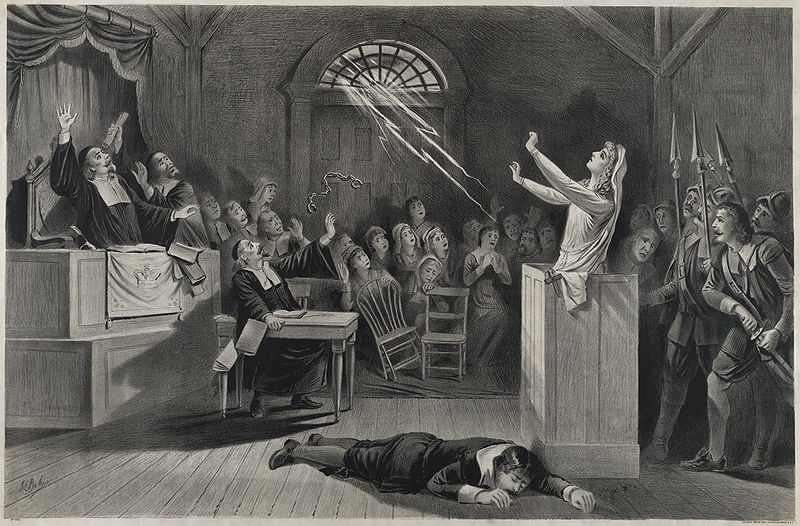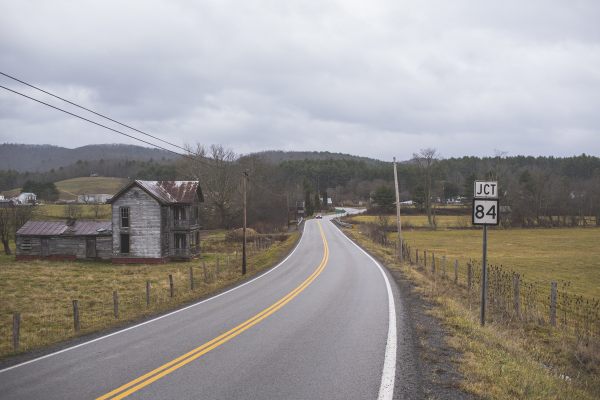The True Villain in the Salem Witch Trials
The psychosis that took over the Massachusetts city might have been caused by mold.

A depiction of the Salem Witch Trials. (Photo: Library of Congress/LC-DIG-ppmsca-09402)
In the punishing winter of 1692, young girls in Salem, Massachusetts began to experience a strange madness. They screamed, flung things, and contorted their bodies into pretzels, complaining that their skin was crawling with invisible bugs. Nearly three centuries before the release of The Exorcist, the people of Salem immediately looked to supernatural causes as the explanation.
But while demonic possession is serious business, the true cause of the Salem Witch Trials might literally be something to sneeze at.
The basics of the story are probably familiar to anyone who’s had to pass 10th grade English class: when 9-year-old Elizabeth Parris and her 11-year-old cousin, Abigail Williams, were afflicted by bizarre, hallucinatory fits, which John Hale, a minister in nearby Beverly, described as “beyond the power of Epileptic Fits or natural disease to effect.”

Before long, other young women in the town became stricken with the same symptoms. Unable to pinpoint the source of the bizarre illness, superstitious townspeople blamed witchcraft, and hysteria took over. The town was held in the grip of a full-blown witch panic.
The first to be accused of witchcraft were Tituba, a slave who was suspected to practice voodoo, and Sarah Good and Sarah Olson, two elderly women who were considered outcasts by the community. By September of 1692, 140 women had been accused of witchcraft and nineteen had been executed. (Bridget Bishop, the first to be executed, was considered suspect in part because of her “provocative” clothing and the fact that she was known to play shuffleboard.)
Then it all stopped.
Since then, the Salem Witch Trials have been a topic of much speculation, mostly from a sociological and political perspective. (In The Crucible, Arthur Miller famously used the witch trials as lens through which to explore the anti-communist panic of the ‘50s.) But it wasn’t until the 1970’s that a plausible biological explanation for the hysteria was offered.
That explanation? Mold.

Rye ear showing ergot. (Photo: Carmen Rieb/shutterstock.com)
Specifically ergot, a fungus that commonly forms in wheat, rye, and other grains. When ingested, rye ergot is now known to cause such symptoms as convulsions, vomiting, and hallucinations, including the delusion that one’s skin is crawling with bugs. In other words, symptoms strikingly familiar to those that the people of Salem believed could only be caused by black magic.
The first to float this theory was Linnda Caporael—now a behavioral psychologist at Rensselaer Polytechnic Institute—who began putting the pieces together as a college student in the 1970s.
While her evidence is mostly speculative, it makes sense. There is precedent for mold’s impact on other animal behaviors, as some mold has been proven to be able to turn hard-working ants into mindless zombies. Almost all of the accusers lived in the same swampy region of Salem— just the kind of damp environment in which ergot fungus would have been likely to develop and thrive. Rye was the primary grain eaten in the village. And the accusations of witchery ended just as abruptly as they had started, following a particularly dry summer.
These articles are brought to you by Netflix's Stranger Things. All Episodes Now Streaming.







Follow us on Twitter to get the latest on the world's hidden wonders.
Like us on Facebook to get the latest on the world's hidden wonders.
Follow us on Twitter Like us on Facebook